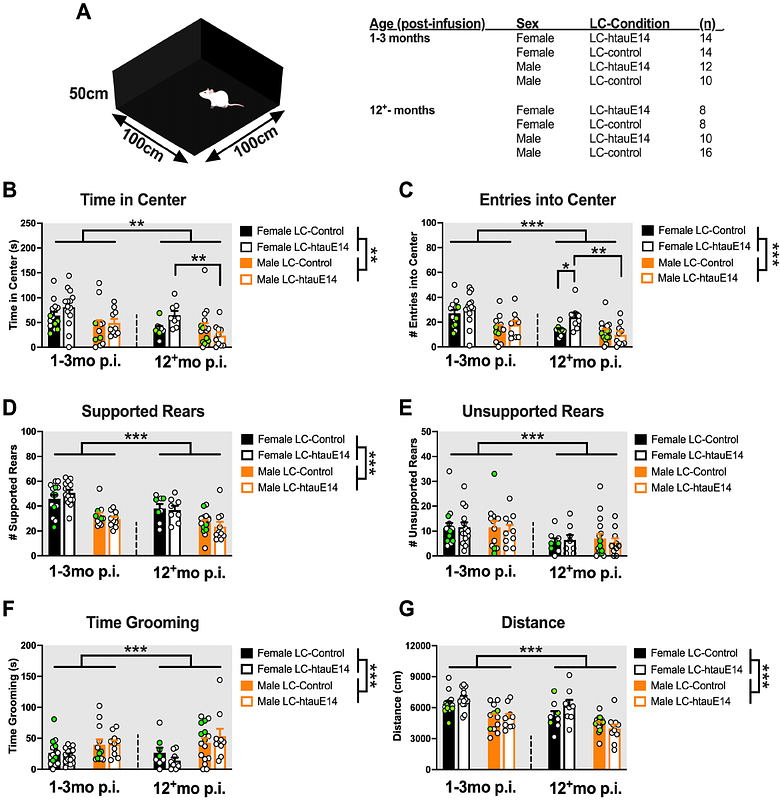Sex- and age-dependent effects of locus coeruleus-originated tau dysfunction on olfaction and neurophysiology in rats

Sex- and age-dependent effects of locus coeruleus-originated tau dysfunction on olfaction and neurophysiology in rats
Dutton, O. D. E.; Wasef, M. A.; Burke, A. T.; Chirinos, E. A.; Jones, A. T.; Vey, R.; Skinner, D. M.; Harley, C. W.; Walling, S. G.
AbstractBraak and colleagues (2011) described human pretangle stages of abnormal tau protein originating in the locus coeruleus (LC) of young adults (Braak Stages a-c, 1a-b), decades prior to the neurofibrillary tangle stages observed in Alzheimers disease. To capture the features of LC-originated pretangle tau stages, we used a rat model where male and female TH-Cre+/- rats received bilateral LC infusions of a hyperphosphorylated human tau (htauE14) gene via a viral vector. To assess the effects of age and sex on pretangle stage tau, we assayed physiological and behavioural changes 1-3mo (young) and 12+mo (aged) post LC-infusion (p.i.). Open field measures revealed age and sex-dependent differences in anxiety in LC-htauE14 infused rats and overall sex- and age-dependent differences in activity. Odour discrimination tests showed little impairment in LC-htauE14 infused rats at 1-3mo after LC infusion. At 12+mo p.i. however, LC-htauE14 male rats failed a difficult odour discrimination test and a further olfactory detection test (habituation-dishabituation), but male LC-Control rats and female rats were not impaired. LC neuronal firing rates were assessed in urethane-anesthetized aged (12+mo p.i.) male LC-htauE14 and LC-Control rats. The baseline level of firing of LC neurons in LC-htauE14 rats was higher than firing rates of LC-Control rats. Oscillatory patterns in LC firing were increased in amplitude and frequency by LC-htauE14. PSD95 density measures in piriform cortex were similar for LC-Control and LC-htauE14 male and female rats of young and aged groups. While synaptophysin density was higher in controls of the 1-3mo p.i. groups than in the LC-htauE14 rats, levels did not differ among aged groups. The increased excitability of LC cells observed may occur in relation to reduced LC axon arbours or may reflect a separate effect of htauE14 in LC neurons. The association of increased tonic LC activity to behavioural changes in the pretangle tau rat model merits further investigation.